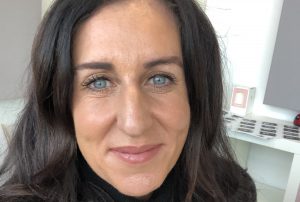
After more than 35 years of operation, TBI is closing its doors and our website will no longer be updated daily. Thank you for all of your support.
TBI in Conversation: ‘It’s A Sin’ head of production Michaela Fereday on bringing the 1980s to life
Red Production Company’s Michaela Fereday, head of production on It’s A Sin, tells TBI’s Mark Layton how the devil was in the detail when bringing the 1980s to life for the hit drama.
It’s A Sin, the new series from Russell T Davies (Queer As Folk, Doctor Who) launches on US streamer HBO Max today, following its debut on UK comcaster Channel 4 last month.
The five-part 1980s-set drama, developed by Sarah Doole-helmed Manchester-based Red Production Company, follows a decade in the lives of a group of gay men and their friends living in London during the AIDS crisis, and proved an overnight hit with UK audiences and critics.
The show’s head of production, Michaela Fereday, tells TBI that it was clear how much of a passion project this impactful drama was to showrunner Davies, whose attention to detail stretched from the script to the screen.
In one scene, a family is watching an AIDS public health advert on TV, in another a character picks up a stack of magazines. Even small details such as this hold meaning.
“All of that is on the page, that is how detailed Russell is in his writing,” says Fereday. “On the stage directions, that is written as what they are watching, and he’s chosen that down to certain magazines they might see. They are real publications, so we had to try to get hold of those and the clearance for them. Everything is as authentic as possible.”
Fereday explains: “It is so fixed in his mind and he won’t settle for second best. Normally we might mock up a magazine, but he’s chosen it very specifically because there was uproar back in the day about that photographer or there’ll be a backstory. His attention to detail is always there.”
Acceptable in the ‘80s
This specificity stretches right across the production, which recreates the look and the feel of the era with incredible fidelity, from fashion and hairstyle to the sets themselves.
“Every creative head of department was chosen very carefully, and they were all given that autonomy to deliver their best version,” says Fereday, who notes that many will think of period dramas “as being petticoats and corsets,” but we are now four decades removed from the 1980s and a lot of work went into making the production look authentic.
Fereday worked closely with production designer Luana Hanson who she credits as “meticulous down to the finest detail.” Citing one example, Fereday reveals the team searched for a suburban kitchen that looked as though it hadn’t changed since the 1980s, just for one very short scene.
“So you think perfect, this is an ‘80s kitchen, but Luana walks in and says, ‘I need to change all the hinges, I have to change all the light fittings because they’re modern, they’ve been changed, they’ve been changed…’ and we’re like, really? But that’s how meticulous she was and I think the whole picture is so much more believable because every detail has been thought about.”
What The Doctor ordered
One more iconic ‘80s institution that the series recreates is another show close to Davies’ heart; the BBC sci-fi hit Doctor Who, which he successfully brought back to screens in 2005 and served as showrunner on until 2010. In one scene of It’s A Sin, one of the main characters is seen acting in a faux episode that faithfully recreates the look of the show as it appeared in the ‘80s, alongside its iconic Dalek villains.
“They are the real Daleks. We got them from Doctor Who – obviously Russell has a bit of pull,” reveals Fereday, adding that the production was also able to use the usual operators for the pepperpot-shaped monsters.
“The character is becoming an actor and we see him filming a scene, but for us to recreate that ‘80s set, with the Daleks and the operators, all of that paraphernalia; we had to show the old cameras in shot, that whole set up alone – for us, for a production, that was huge to carry off.”





